What you can't plant next to bitter peppers: crop rotation rules and growing secrets
Red hot peppers (chili, bitter) are a vegetable crop that is becoming more and more popular. It is also often used as a decorative decoration.
There are about 500 species of hot peppers. Fruits have different shapes - from spherical to elongated, varied and colors - from orange to black-olive.
The content of the article
Features of crop rotation when growing hot pepper
By following the principles of proper rotation of different crops on the site, a bountiful and healthy crop is grown that does not drain the land.
Beans, peas and beans are what you can plant with hot peppers. Legumes have a specific odor that many insect pests cannot tolerate; moreover, they feed the soil with nitrogen necessary for growth.
Important! Planting bitter and sweet peppers together is not recommended. Cross-pollination will impair the taste of both.
The development of plants of the Solanaceae family takes a lot of useful substances, due to which the soil is depleted. Therefore, after the peppers and before them, unpretentious crops are planted, capable of enriching the soil with useful substances.
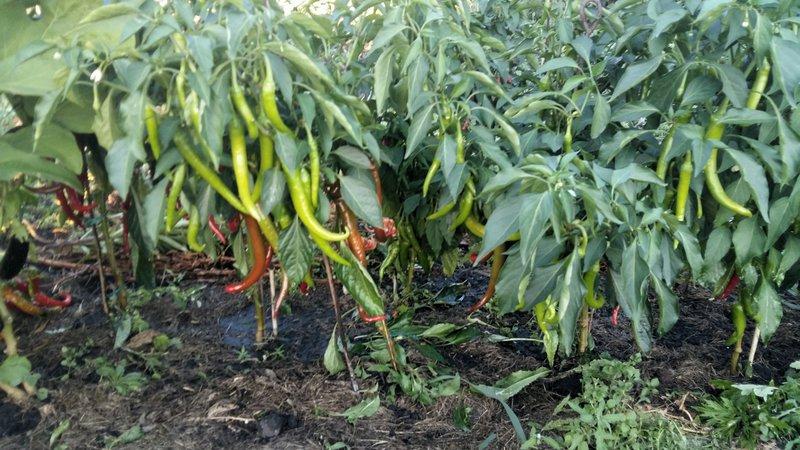
What can and cannot be planted after hot pepper
The following crops take root well in the land where the peppers previously grew. They are also successful predecessors before the rest of the cultures of the nightshade family:
- melons;
- legumes;
- onion;
- zucchini;
- siderates (plants that restore soil);
- cauliflower;
- cereals.
Planting some crops negatively affects the quality of the land both before and after planting the peppers:
How hot peppers grow
Planting of hot peppers begins in February-March in the northern regions and in January-February in the southern regions. To prepare the soil mixture, it is necessary to mix humus, high moor peat and river sand in equal amounts.
Before planting, the seeds must be properly prepared: they are laid for 30 minutes in a weak solution of manganese, then wrapped in a damp cloth. Planting material should be kept in a warm place until germination. Next, the seedlings are grown in boxes or peat pots, pre-filled with treated potting soil.
Seeds are laid to a depth of 5-10 mm with a distance of at least 5 cm. Before emergence, the containers are covered with foil and placed in a warm place. After about 7-14 days, the seedlings are placed in a well-lit place. The main thing is to keep the substrate moist, avoiding waterlogging.
reference! Hot pepper seedlings are hard to pick. Damage to the root system greatly slows down growth.
The best moment for a pick is the appearance of 2-3 true leaves.
When growing peppers, it should be remembered that this is a crop of short daylight hours, the duration of illumination is sufficient from 10 to 12 hours.
Next, let's look at how to grow red peppers. Before planting in open ground, while the chili pepper grows indoors, it is fed twice: two weeks after the pick and 2 weeks after the first feeding. To do this, use solutions such as "Krepysh", "Fertika Lux", "Solution", etc.
After picking, the seedlings are placed in larger pots with a good drainage layer.It is advisable to place the containers on the south side of the house so that the plants have enough light.
Important! When the stem reaches 20 cm, pinching is performed to improve branching.
Caring for chili peppers before planting is regular watering and feeding. Watering is carried out with settled water at room temperature in a pan under the pot. As soon as there is no water in the pan, watering is done again. While the hot pepper is growing, it is fed with a complex mineral fertilizer for indoor geranium. A young vegetable does not like drafts, so you need to carefully ventilate the rooms where the seedlings are located.
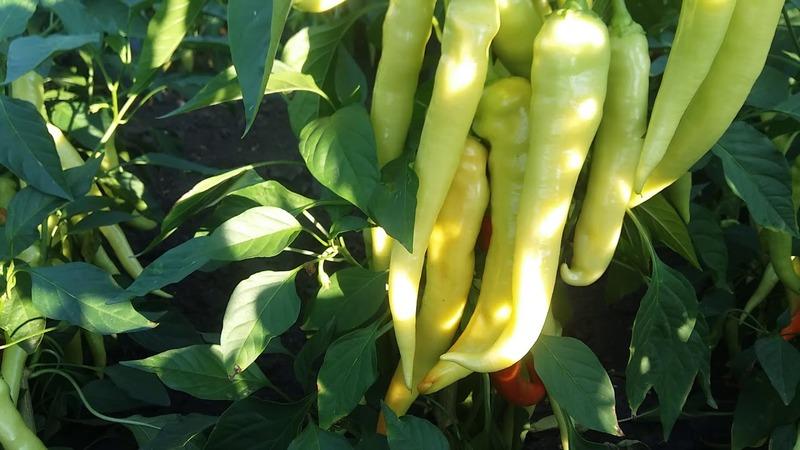
How to grow it
Vegetable crops are planted both in open ground and in greenhouses. Let's consider both options.
Growing hot pepper in the open field
Planting open ground occurs at the stage of the formation of the first buds.
note! This culture is thermophilic - the air temperature must be at least 15 ° C.
14 days before planting, the seedlings are hardened - the plants are taken out onto the street or onto the balcony. Hardening begins from 20 minutes and is gradually brought to 1 day.
Holes are made in the soil at a distance of 30-40 cm, row spacings are at least 55 cm. It is quite possible to place two seedlings in one hole. 1 tbsp is placed in each hole. l. mineral fertilizer and mixed with the ground.
The seedling removed from the container is carefully planted in the ground. The hole is half filled with soil and watered abundantly. After the water is absorbed, it is filled with earth to the top. Then the bed is mulched with peat. If the air temperature drops to 14 ° C or more, the plants are covered.
Note! It is best to plant seedlings on a cloudy day or in the late afternoon.
When the plants reach a height of 30 cm, the top is pinched, which leads to the appearance of side shoots. They also give ovaries.
Pepper does not tolerate drying out of the soil. Watering is necessary daily, and on hot days - twice a day. Do not use cold water. To heat the water, the bucket is exposed to the sun.
If at the beginning of the formation there is a need for feeding with phosphorus and magnesium, then it is advisable to reduce the feeding before ripening.
In the open field, all crops are susceptible to various diseases and pests. Of the pests, the nightshade family is afraid of the bear, spider mites and Colorado beetles. And from diseases - tobacco mosaic, late blight, white, brown and black spot. Therefore, it becomes necessary to carry out prevention, even if the culture is completely healthy.
They treat pests with insecticidal preparations, for example, "Agravertin", "Kleshchevit" and others. As for fungal diseases, fungicidal agents are used here, for example, Bordeaux mixture or copper sulfate.
On a note! Toxic chemicals are not the best option for plants. Experienced gardeners are advised to use folk remedies.
Collecting chili peppers begins in July and continues until October. The fact that the time has come for collection is indicated by the bright color of the pod. At this time, the leaves turn yellow and dry out. It is not necessary to pluck bitter pepper from the bush - this is how the trunk of the plant is injured. It is better to cut it off together with the stalk. You can also pick pods unripe. These peppers have less pungency and are great for canning.
Growing hot chili in a greenhouse
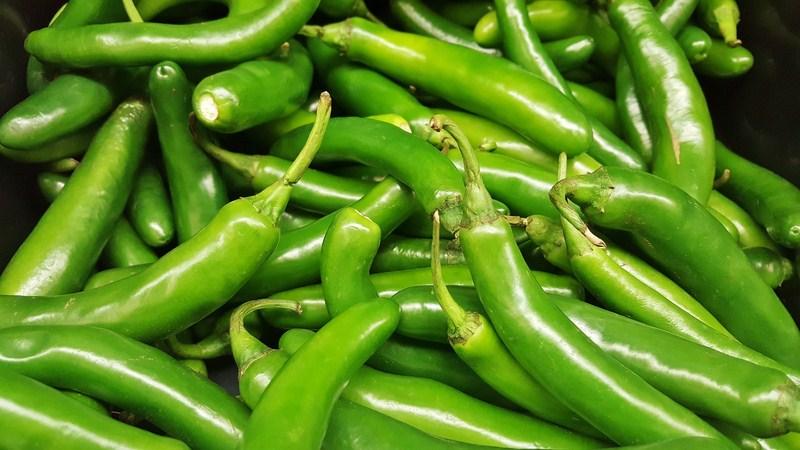
When growing crops in a greenhouse, it is easier to control not only the temperature regime, but also the level of air humidity.
Seedlings are planted in a greenhouse when they reach 10-15 cm, and only when the temperature at night is not lower than 12-13 ° C.
The daily temperature of 16-18 ° C is considered optimal for the growth and development of peppers. In the greenhouse, the soil is also watered with warm water. After that, the earth is loosened, weeds are removed. From the moment the fruits are formed, dressings are introduced once a week (liquid fertilizers intended for tomatoes are quite suitable). Tall plants need a garter.
When the first fruits appear, a weekly feeding is provided, as in the open field.
The pods finally ripen by autumn, but experienced gardeners advise not to wait for their full ripeness, but to remove the peppers in a semi-ripe state. This frees up space for the ripening of green fruits. They acquire a bitter taste when fully ripe.
Read also:
What and how to store zucchini for a long time - we create ideal conditions.
An exotic vegetable with an unusual taste and name - "Pink Banana" pumpkin.
How to grow on a windowsill
On the windowsill, such plants look very bright and are an excellent decorative element.
In the photo there is a chili plant.
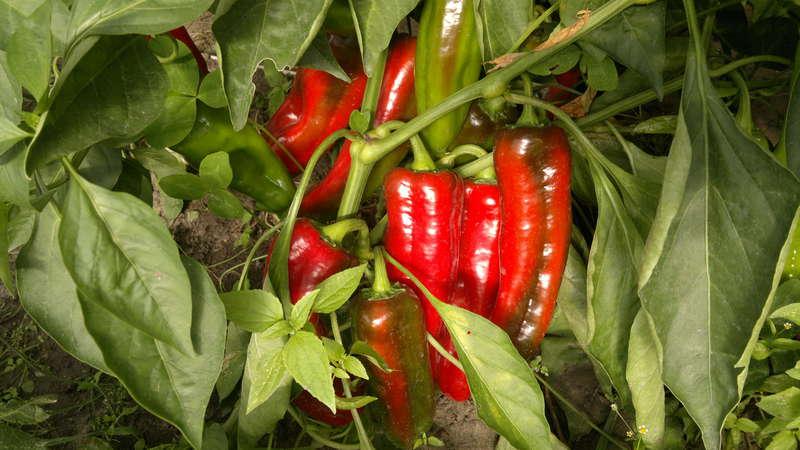
For the successful growth and development of a plant, it is necessary to create optimal conditions. A vegetable from tropical America is a perennial, and with proper care and regular feeding, it can bear fruit for 5-7 years.
When breeding indoors, the following factors are taken into account:
- lighting;
- selection of the correct containers;
- features of watering and dressing.
Some varieties are the most popular for home cultivation:
- Twinkle- a variety bred by crossing chili and cayenne pepper. The height of the bush is 40 cm, the fruits reach no more than 5 cm. As they ripen, they change color, like a traffic light: green, yellow, red. Ripening occurs within 120 days.
- Aladdin - the variety is considered ultra early. It can grow up to 40 cm, the peppercorns are multi-colored, no more than 3 cm. In the process of growth, their colors change: green, purple, red. It matures within 105 days.
- Garda Firefox - one of the new varieties. The bushes are 30 cm high. The pods are 5 cm long. The peculiarity of this variety is that its peppercorns grow with their tips up and, like the previous varieties, change their colors. At the same time, there are green, lilac, orange and red. Ripens in 110 days.
Also suitable for indoor breeding are such species as the Queen of Spades, Black Prince, Fat Man, Medusa, Phoenix. You can pick up several varieties at the same time. But the most popular varieties for growing at home are Ogonyok and Chile.
You can sow sweet black peas next to them. The conditions for their growth are the same. Any indoor flowers take root next to the nightshade family.
The photo shows how hot peppercorns grow.
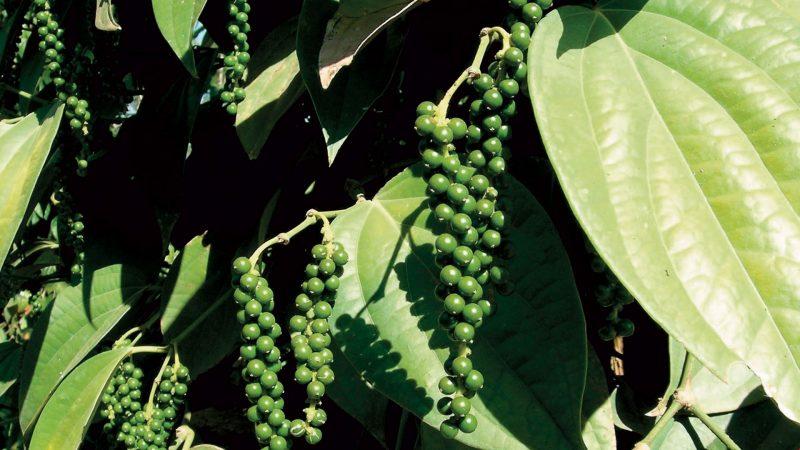

reference! Don't use store-bought pepper seeds for growing. These are industrial varieties and require different growth conditions.
Sowing seeds at home can be started at any time of the year. If you plant peppers in December, there will already be ripe fruits in July. A window sill located in the southern part of the room or southeast is best suited. In summer, plants are recommended to be taken out to the balcony, but protected from drafts.
The use of hot pepper
Hot pepper is used in cooking in many countries. But it is most used in South American cuisine. Pepper improves the taste of fish and meat dishes, side dishes and soups. It is salted, fermented, stewed, pickled. When crushed, it is used as a seasoning. It goes well with many spices. The seed and veins are the sharpest part. If spiciness is not required during cooking, they are removed.
This vegetable is also good when frozen. To do this, immerse the pods in boiling water for 3 minutes, discard in a colander, cool and freeze.
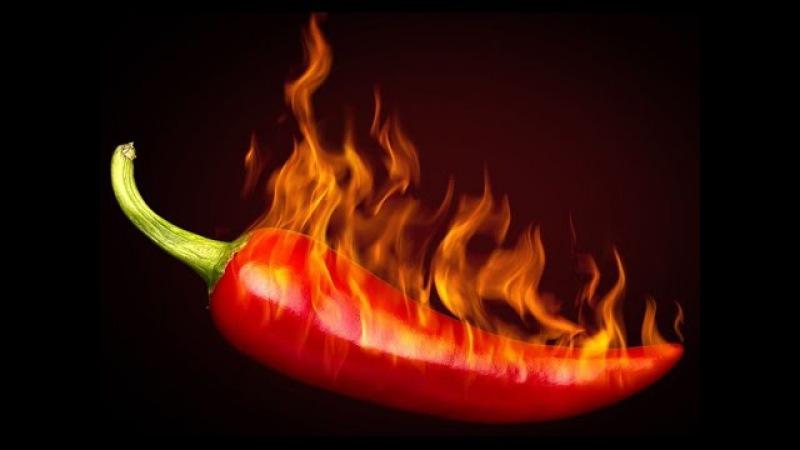
Conservation
Many housewives canned vegetables in sunflower oil.... This is done in this way: washed peppercorns, previously freed from seeds, are placed in a sterile jar. The jars are filled with lightly salted sunflower oil and rolled up with sterile lids. They are stored in a dry, dark place for 2-3 months. Hot peppers can be pickled... Favorite spices are added to taste - cherry leaves, basil, garlic, etc.
In folk medicine
Hot peppers are a great antioxidant... It has anti-inflammatory and bactericidal effects.It induces appetite, helps to digest heavy food. Promotes acceleration of blood circulation and prevents blood clots, is a good helper in lowering blood pressure.
Able to stimulate the production of endorphins in the human body. Eases the condition with severe cough and even sore throat. Its general strengthening effect on the immune system was also noted due to the high content of vitamins and macronutrients.
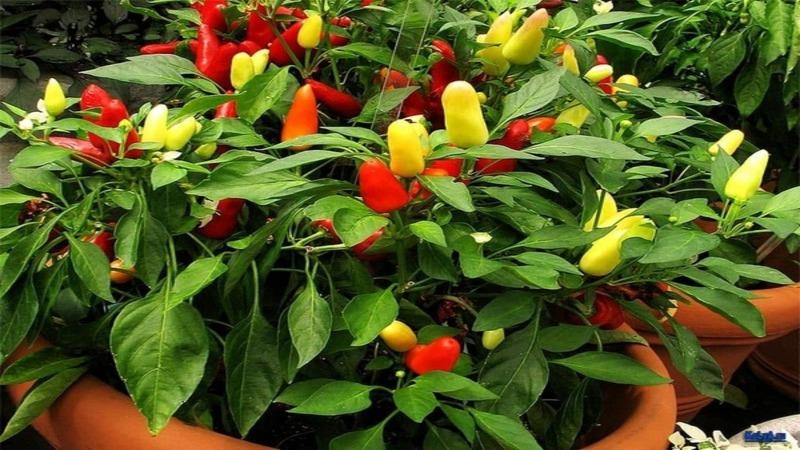
reference! Pepper contains vitamins A and C. It is also a source of B vitamins, in particular B6.
A sticky pepper patch works well as a local irritant. In case of insufficient blood circulation in the lower extremities, hot foot baths with pepper solution are made. This vegetable will be useful for those who suffer from insomnia.
In cosmetology
Hot pepper is widely used in cosmetology. It is a part of masks, balms, shampoos, anti-cellulite preparations. In toothpastes, it helps get rid of bleeding gums. In hair strengthening products, pepper promotes blood flow to the hair follicles, reduces their fat content, and also has a positive effect on colored hair.
Ointments and creams based on hot pepper are contraindicated for dermatitis and wounds on the skin.
Important! Avoid contact with mucous membranes and eyes. If this cannot be avoided, thoroughly rinse the damaged area with running water.
Conclusion
Chili peppers take a strong position both in small gardens and in large farm fields. Due to its beautiful appearance, it is grown even on windowsills.
This plant is popular not only in cooking. It is used both in folk medicine and in cosmetology. Even a novice gardener can grow it.